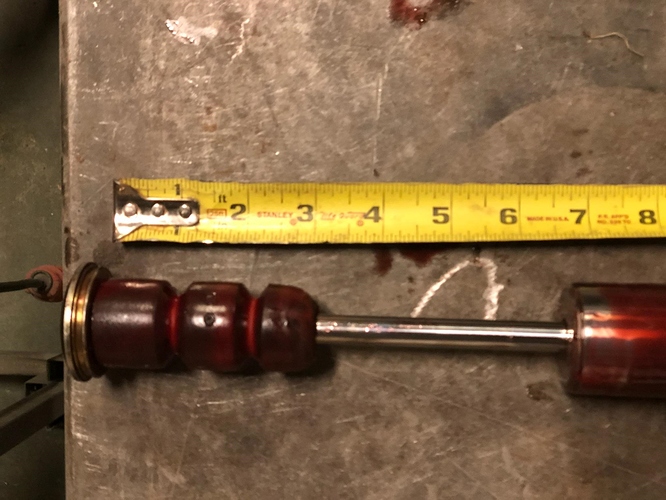This post is intended to help people who have no idea what they are doing. If you’re beyond that stage and are interested in fine tuning your ride height, that’s best handled with a bunch of testing.
My car’s ride height, based on exposed threads below gold adjuster:
F 8, 6
R 2, 0
How to get to a reasonable setting for your car.
Start by setting your spring adjusters to something like:
F 6, 6
R 4,4
Now you’re going to have to corner balance your car. If you can’t borrow scales, the cheapest solution is to buy 8x 400lb bathroom scales. Put a pair at each corner of your car and a board across each so that the weight of the corner is equally distributed across each scale pair. Note, however, the price of nice corner balancing scales is coming down, I got a set $850ish last year. I went in with another local racer and we bought them together.
Corner balancing is the process of raising and lowering the corners of your car such that the weight on one diagonal is close to the weight on the other diagonal.
How to visualize lousy corner weight: Imagine you raised your LF wheel up 6" and tried to drive around the track. The car would be constantly rocking it’s weight from LF to RR like a teeter-totter. Since the traction at a corner is a function of the weight on that corner, the traction at the light corner would be compromised.
Here’s a nice corner balance calculator. Corner Balance Calculator
Do some thinking re. how corner balancing works. You have to imagine how adding/removing height to one corner effects the other. If you don’t visualize this, corner balancing is going to be confusing. If, for example, you raise your LF corner, it will put weight on both LF and also RR. It will remove weight from RF and LR.
You need to do this on a very level surface. Don’t eyeball this. Go get a 6’ piece of box cross-section AL bar at Home Depot, put a couple sockets on your garage floor where the wheels go, and put the AL across the sockets. Then put a level on top of the bar. Be prepared to use thin sheets of wood or something to level out your garage.
With your car on your very level surface, play around with the spring adjusters, your scales, and the corner weight calculator pretty close to balanced. A corner weight of 51% is really good. Better than that, imo, is a waste of time. If all you can get is 52%, have a beer and call it a day.
Here’s the trick tho. Corner balance your car w/o lowering the front. Raising the front is ok, but you can’t lower it. Because our front struts are too tall, we’re already on the ~3" tall Eurethane bumpstops inside of the struts. So by raising the front of the car a bit, you reduce the car’s pressure on the bumpstops and regain some reasonable spring rate and suspension travel. How low is too low is, of course, a matter of opinion. I chose 6 threads.
Afaik, there is no noticeable downside to running the rear of your car pretty low. An argument could be made that putting the rear so low adds roll because it raises the roll center. But lowering the rear also reduces roll because it lowers the car’s center-mass. The latter is pretty clear and I’ve never found a compelling write up re. E30 rear suspension and just how much roll center problem is caused by lowering it by 5mm.
Keep in mind that in racing there is no consensus on anything. It’s a rare day that >50% of the community agrees with my opinions.



